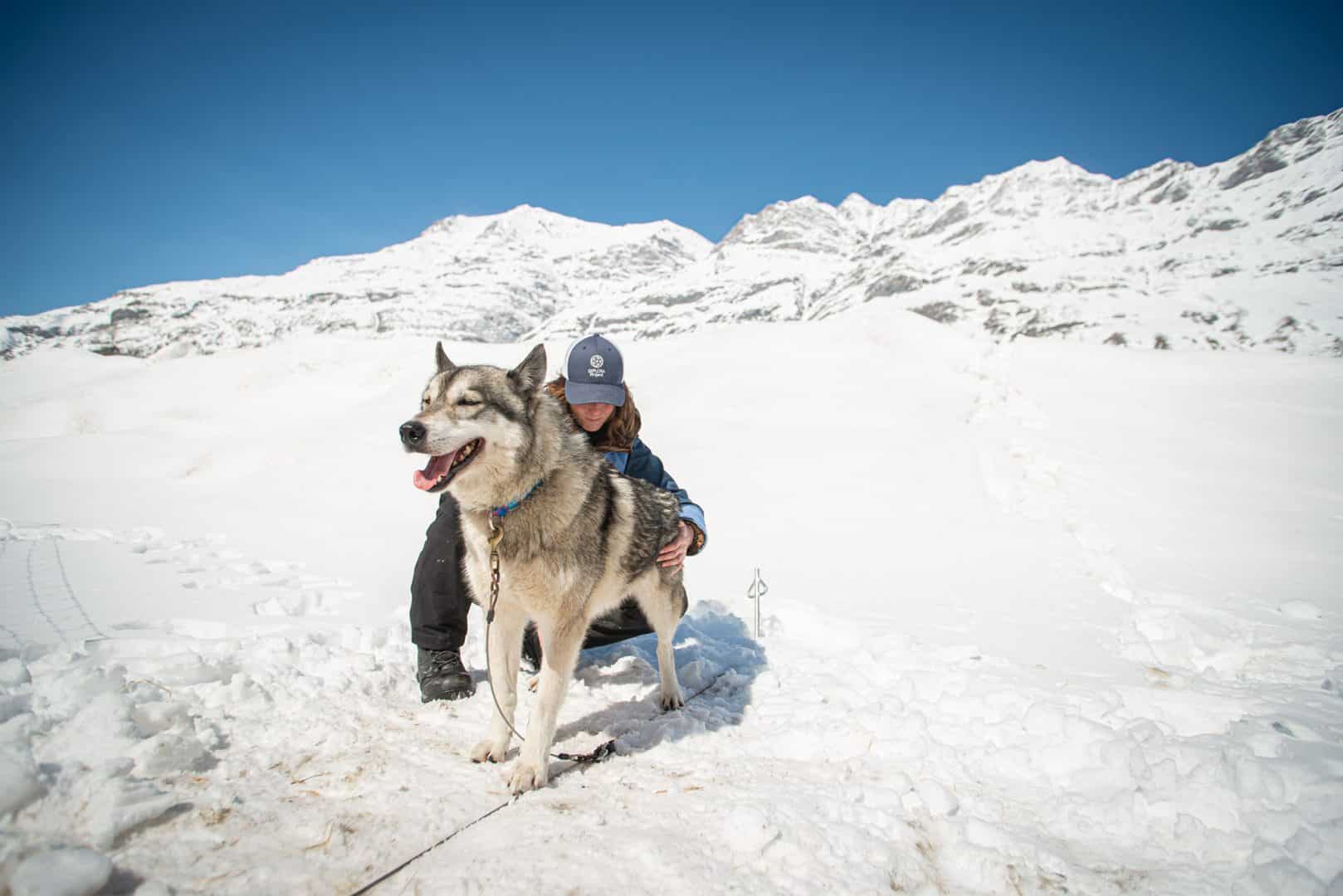Sporting dogs, whether they participate in demanding sled dog races such as the Femundløpet or La Grande Odyssée, or whether they are engaged in other canine sporting disciplines, require special attention in terms of health, safety and well-being.
In this world where animal performance and health are closely linked, animal osteopathy plays a crucial role. Discovery of this animal health monitoring with the help of Elsa Bouhours, animal osteopath specialized in the physical management of sporting dogs!
Prevention and Support for Effort by Elsa Bouhours

“Most of the sporting dogs that I look after benefit from regular monitoring in the context of prevention and exercise support.
This results in several consultations throughout the year. They are planned according to competition deadlines or variations in training intensity. During these osteopathic consultations, my attention is focused on locomotor, digestive, metabolic and behavioral disorders (which are not considered pathological by the veterinarian).
My work particularly focuses on locomotor asymmetries and irregularities in sporting dogs. I also sometimes carry out post-traumatic or post-operative return to activity consultations, and monitor musculo-tendinous, ligamentous, vascular, digestive pathologies…”
Frequent Pathologies and Risk Factors
In the world of sporting dogs, the predominant joint pathologies are:
👉 capsulitis: affection of the fibrous structures which surround a joint. The joint capsule is essential for maintaining the integrity and stability of the joint. If inflammation/irritation occurs, this can lead to restricted joint movement, pain and stiffness.
👉 bursitis: inflammation of a synovial bursa (“small bag” filled with fluid located between a tendon and a bone or between the skin and a bone). Synovial bursae play a crucial role in reducing friction and allowing smooth movement of adjacent structures. When a synovial bursa becomes inflamed, it can lead to pain, swelling, and tenderness in the affected area. Movements of the joint associated with bursitis can be painful and limited.
👉 tendinopathy: inflammation of a tendon. Typical symptoms include localized pain, tenderness, swelling and stiffness in the affected area.
👉 sprains with ligament damage: a sprain occurs when the ligaments are stretched beyond their normal range or torn. Symptoms of a sprain with ligament injury usually include sudden, severe pain at the time of injury, swelling, hematoma, a feeling of weakness or instability in the joint, and difficulty moving the joint affected. The severity of the symptoms depends on the degree of ligament damage, which can vary from simple distention to a complete tear of the ligament.
👉 muscle damage: Also called a muscle tear or strain muscle, it occurs when muscle fibers are stretched beyond their normal capacity and partially or completely tear. Muscle injuries can vary in severity, from simple muscle strain to partial or complete tearing of the muscle. Symptoms of a muscle injury usually include sudden, severe pain at the time of injury, a tearing or popping sensation in the muscle, swelling, bruising, and loss of strength or function in the affected muscle.
These injuries often occur in the kennel (fall, too rough play, paw in a hole, etc.) but also during training, where repeated small shocks can lead to lesions (for example inflammation of the carpals during descents at too high speed).
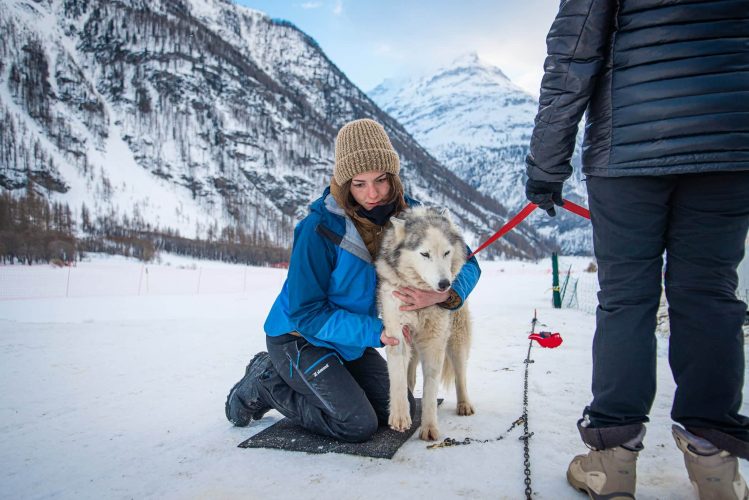
The use of unsuitable equipment, such as poorly adjusted harnesses, can contribute to the appearance of these pathologies. However, it is important to emphasize that, overall, sporting dogs have fewer pathologies than companion dogs, largely due to increased monitoring and appropriate training programs.
In pets, common locomotor conditions include: arthritis or osteoarthritis, hip or elbow dysplasia, patellar dislocations, cruciate ligament ruptures, bone fractures, spondylosis, hernias disc injuries and sprains/strains.
“When there is doubt, there is no doubt! ”
“Prevention is an effective way to combat the appearance of locomotor disorders in dogs.
Preventive monitoring by an animal osteopath registered with the RNA (National Register of Animal Osteopaths) is strongly recommended to detect and correct locomotor imbalances before they become harmful to the animal. Careful observation of locomotion and behavior, particularly during work sessions, is essential.
Additionally, it is imperative to take a proactive approach when in doubt about the presence of pain in a dog, by putting them to rest and/or consulting a veterinarian as soon as necessary.” - Elsa Bouhours

Tendiboots™ canine help monitor sports dogs
“The data collected by Tendiboots offers me interesting perspectives as an animal osteopath specializing in the monitoring of sporting dogs. This tool allows me in particular to:
👉 Specify the analysis of the dynamics of the dog before osteopathic manipulation.
👉 Monitor the evolution of locomotion over an entire season taking into account osteopathic care, massages, training, races, etc., all with quantified data.
👉 Accumulate data to support my osteopathic research in the sporting dog." - Elsa Bouhours
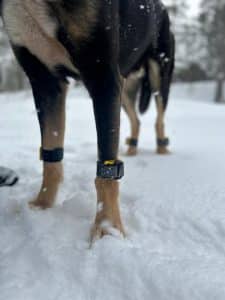
Training and development of the Discipline
Training in animal osteopathy specialized in the field of canine sport is a subject of increasing importance.
This discipline requires in-depth knowledge of the physiology of dogs as athletes, and an understanding of the ethical and practical issues specific to this environment.
"Osteopathy is a vague discipline, in the sense that each osteopathic treatment depends on the practitioner who carries it out as well as the interface between the patient and the practitioner. This is, in my opinion, a great strength of osteopathy, However, not all trends seem to adapt to the monitoring of these sporting dogs and the expectations of the owners. This is still under discussion, in perpetual questioning of course." - Elsa Bouhours
This constantly evolving field requires collaboration between canine veterinarians, animal osteopaths and other professionals in the field to guarantee the well-being and performance of dogs.
In conclusion, animal osteopathy plays a crucial role in the overall care of sporting dogs. By combining prevention, regular monitoring and the use of objective data. Specialized animal osteopaths help maximize the athletic potential and ensure the long-term well-being of these outstanding canine athletes!
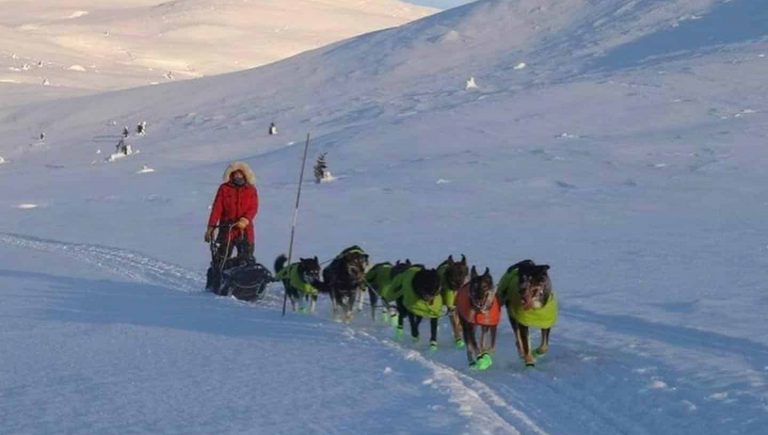
Elsa Bouhours is a trainer in osteopathy for sporting dogs. She also teaches at EAO (Aquitaine School of Osteopathy), EOOA (Occitane School of Animal Osteopathy) and CEMAO (Teaching Center for Alternative Medicine and Osteopathy).
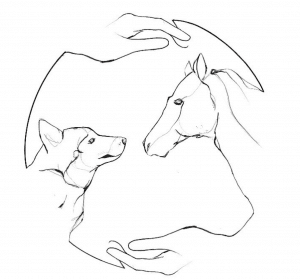
A specialist in mushing and monitoring sports dogs, Elsa accompanies teams during competitions in France and internationally to ensure the performance of the dogs.
Find all her news on her social networks :
📸 Instagram : elsabouhours_osteopathie
🖥️ Facebook : Elsa Bouhours - ostéopathie animale

